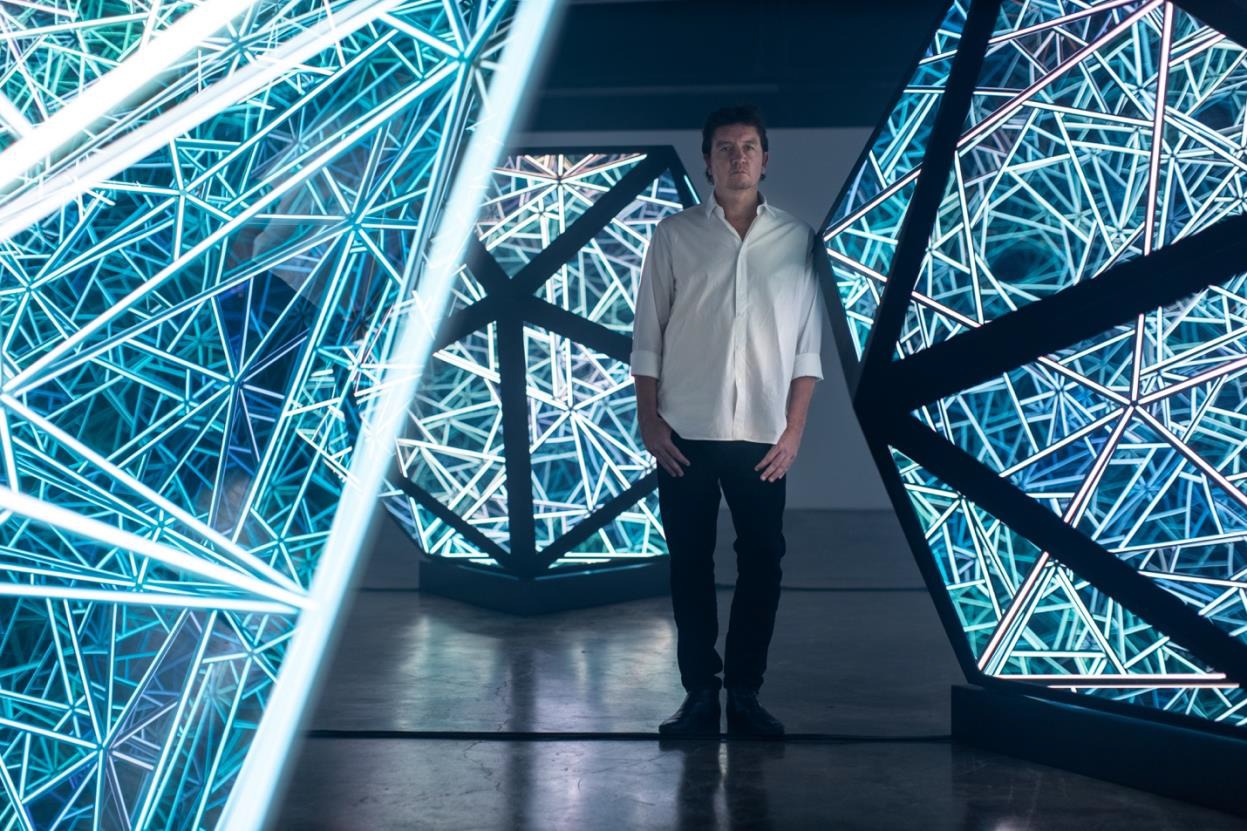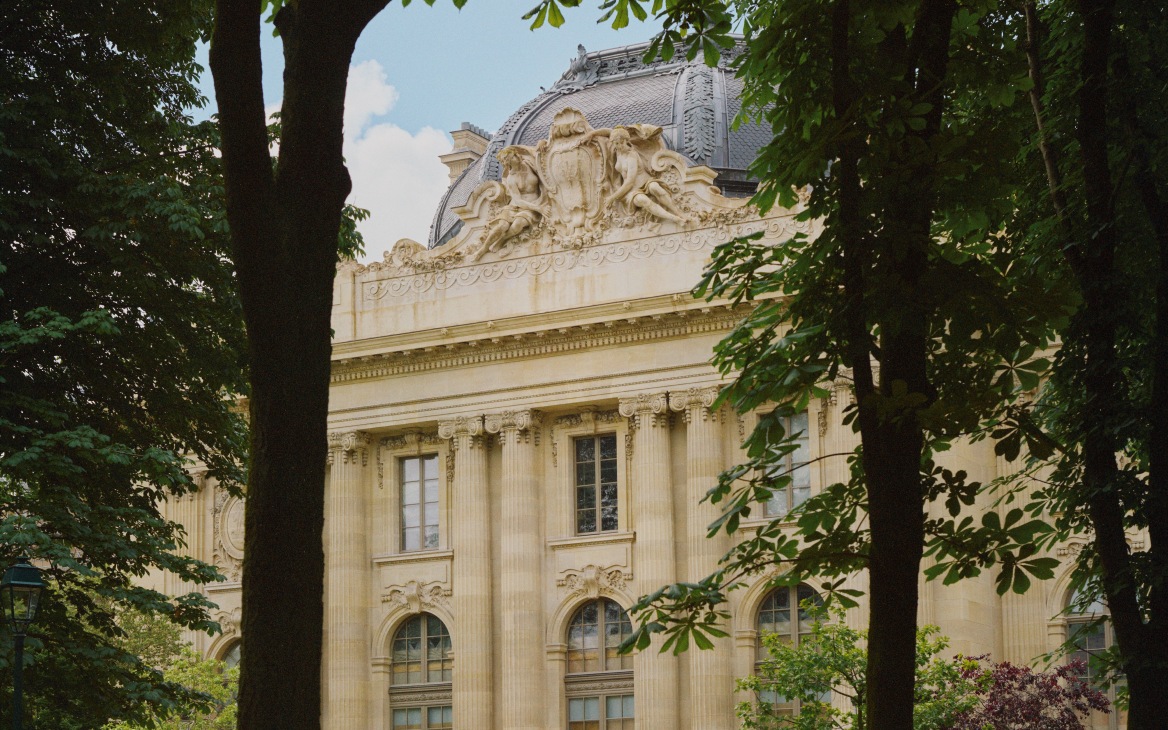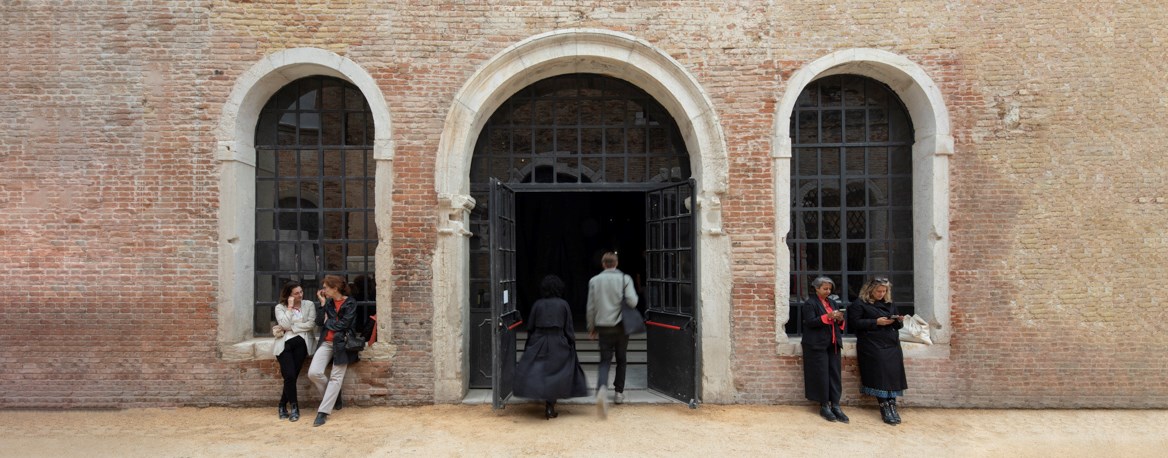Philipp Fürhofer, born in Augsburg in 1982, has become a major figure in the national and international art scene over the last years. His name has become synonymous with a body of work that uses glass, mirrors, and light to create highly aesthetic and enigmatic effects.

Four such light boxes – in which complex light cycles transform acrylic glass, mirrors, and impasto
painting into living organisms – are also on view in our exhibition, the artist’s third with Galerie Judin. First and foremost, it presents a group of works that revitalizes the traditional format of panel painting using the artist’s familiar visual language resulting in what could be understood as a summary of his previous practice.

PHILIPP FÜRHOFER
Truths Behind, 2021
Despite all these technical and stylistic novelties, Fürhofer has stayed true to his canon of motifs. As with the light boxes, his work continues to revolve around the ever changing relationship between man and nature. However, Fürhofer’s interest in cycles – evident in the light circuits – has literally faded out. Instead, he focusses on the concurrency of phenomena. In a sense, we are dealing with the “simultaneity of the non-simultaneous,” as the neo-Marxist philosopher Ernst Bloch proclaimed. Fürhofer no longer depicts the succession but the coincidence of idyllic, romanticizing landscapes and dystopian abysses. An uncomfortable idea that we should get accustomed to.
About the Gallery
Galerie Judin, which has been based in Berlin since 2008, was founded in Zurich in 2003. Its very first exhibition, Barry Le Va—A Survey of Drawings 1966—2003 & Two New Sculptures proved to be exemplary for Juerg Judin’s interests and intentions: a contemporary view of underrated oeuvres in recent art history, elaborately produced exhibitions and carefully researched publications, a program in which contemporary art gets to hold its own alongside great names of twentieth century art—and a concentration on the “traditional” media of painting, drawing and sculpture. Particularly works on paper, Judin’s great passion as a collector, have always been given much space: Exhibitions with a retrospective character have been dedicated to the draftsmanship of Richard Artschwager, Carroll Dunham and Eugen Schönebeck, to name just a few.

Among the younger painters represented by the gallery, figurativism can be identified as the unifying element. This common thread running through the program resists the trend of the times just as much as the restraint the gallery has exercised in growing its stable of artists. From 2008 to 2013 a partnership with New York gallerist David Nolan enabled much-acclaimed exhibitions such as George Grosz—The Years in America and Martin Kippenberger—The Complete Poster Portfolios. Since 2016, Judin has run the gallery jointly with art historian Pay Matthis Karstens. Two ambitious long-term projects have emerged from this collaboration: the compilation of the catalogue raisonnés for Eugen Schönebeck and Michael Buthe, who died in 1994.
Follow the Artist on @PhilippFuerhofer and discover more work by the Artist.



